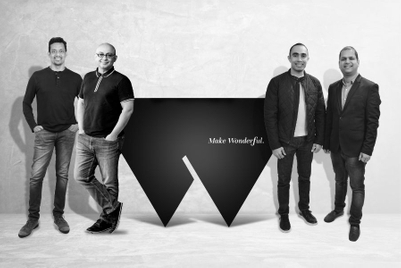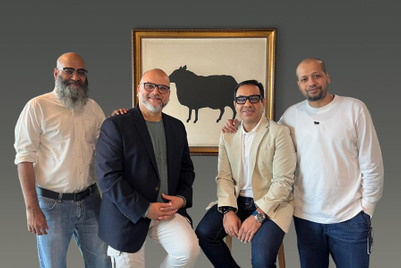.gif&h=570&w=855&q=100&v=20250320&c=1)
You’re close to another year-end when there have been a lot of changes at the group. How has the year been?
It’s been an interesting year. In the traditional media business, we grew better than the market in my estimate, at over 20 per cent. Starcom added Axis Bank and Dabur, while ZenithOptimedia added a whole host of smaller clients. In the digital space, we grew by 98 per cent organically, and then we had the Resultrix acquisition. We have over 400 people now in digital, making us, I think, the largest digital team in the country. And we have ambitious plans for 2013, both for organic growth and otherwise. By end-2013, we should have 800 people only in digital. While we were otherwise later entrants, in digital, which is the medium of the future, we’ve established an early dominant position.
How are these 400 people split, within digital? And where will the other 400 come into?
They are split across agencies, and around 100 came in through the Resultrix acquisition. Around 100 people on the team are part of an offshore unit that supports the US office. Around 150 handle the local market, split across display, search and social. The new additions will come into existing entities and may come in through acquisitions also. We are scanning the market for possibilities.
Typically, you will find digital agencies being either pure play creative, pure media (search, display) and small social agencies. I am personally very gung-ho about the mobile domain. The domestic spend on mobile is quite small, at less than Rs 100 crore. Agencies have traditionally therefore been focused on the international markets; they are now looking at the Indian market.
We hear more than one agency head lamenting that talent is an issue in the digital space...
Established agencies tend to take the wrong approach to digital talent; they tend to remain insular, hiring people from other agencies or from within their system.
There are a few ways in which to tap digital talent. Some of the most exciting talent in the digital space is among independents. They have been open-minded, hiring freshers right out of college, those I call the ‘digital natives’. And then you put them through rigorous, intensive training
A second source of talent is from markets in the West. A lot of people are looking at a stint in India. I find that when you have a structured way to do this, it works well. At ZenithOptimedia, we have Mayuri Kango who was with the New York office, and she wanted to come back to India for family reasons. At Digitas, we have a Frenchman for social media who wanted to experience and work in a third world country.
Now, there are challenges; how do you identify these people, and how do you hire affordably? This has got facilitated by the VivaKi Fluid Talent program, by which any talent can apply for any job anywhere in the network. For people like those at the offshore centre, this also provides a better career path.
Among reasons for acquisitions are clients and businesses, but as important is the acquisition of talent into the system. Gulrez Alam, the head of Resultrix, is now effectively also the head of ZenithOptimedia’s digital business.
Srinivas is moving on, and Mallikarjun has been moved up the chain. Will we see more hires at the top?
If you mean as a replacement for Srinivas, absolutely not. One of the big mandates for 2011 was to hire a CEO. Malli is fully equipped and prepared to lead and run the agency.
Back to digital, how much does it contribute to revenues at VivaKi?
In 2012, we expect digital to account for 25 per cent of overall revenues. Because it is growing significantly faster, we expect it to account for a third of revenues in 2013.
Is the proliferation of digital agencies set to continue, and is it necessarily a good thing?
As we move along, more entrepreneurs will create more agencies. I expect the number of mobile agencies to go up faster. I think the traditional digital agencies will slow down. You need great creative, but I’m not sure you can run a viable business being only a creative digital agency. A time will come when you cannot differentiate on creative alone, but need the technology. Clients already expect at least social and mobile services.
Agency proliferation is not a bad trend. You have youngsters turning entrepreneurs, you have fresh thinking and newer capabilities coming on board. At this stage of the market, more agencies is not an issue. Right now is the time for more people to start believing in digital. Clients are open to meeting people with younger mindsets and skill sets.
The challenge will be for older agencies to demonstrate that they know what’s happening in this world. Few agencies have mobile capabilities, for instance. 12 months from now, they will have to build or acquire those capabilities.
Is the digital business for VivaKi profitable?
For us, digital in 2012 has been extremely profitable. This was not the case prior to 2012.To be able to offer good service to clients, you need critical mass, a certain team size, you need the technology. Smaller companies that have revenues of Rs 10 crore or less struggle to make money. With critical mass comes profitability.


.jpg&h=334&w=500&q=100&v=20250320&c=1)
.jpg&h=334&w=500&q=100&v=20250320&c=1)


.jpg&h=334&w=500&q=100&v=20250320&c=1)


.jpg&h=334&w=500&q=100&v=20250320&c=1)

.jpg&h=334&w=500&q=100&v=20250320&c=1)
.jpg&h=268&w=401&q=100&v=20250320&c=1)
.gif&h=268&w=401&q=100&v=20250320&c=1)
.jpg&h=268&w=401&q=100&v=20250320&c=1)

.jpg&h=268&w=401&q=100&v=20250320&c=1)



